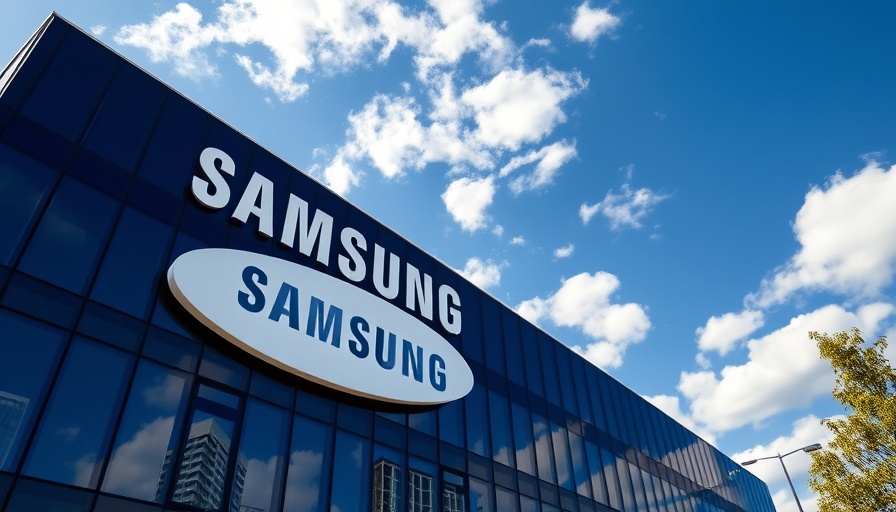
Nvidia Approves Samsung's HBM3E Chips: What It Means for the Future of AI
In a significant development in the world of high-tech memory solutions, Nvidia has approved Samsung's latest HBM3E chips for use in its high-performance graphics computing platforms. This marks a pivotal moment for Samsung as it positions itself to become a key player in the memory market while also impacting competitors like Micron, which reported a dip in stock following this announcement.
Samsung's Competitive Edge with HBM3E
Samsung's newly developed 12-layer HBM3E memory chips have demonstrated promising capabilities, achieving high bandwidths that are necessary for running advanced AI workloads. Nvidia’s CEO Jensen Huang’s endorsement provides more than just validation; it signifies potential financial success for Samsung as it looks to capture a larger market share. The approval also comes in the wake of Samsung's struggles to meet stringent data transfer requirements set forth by Nvidia. With this leap in technology, Samsung is anticipated to close the gap on other major players in the arena of high-bandwidth memory (HBM).
Micron's Ongoing Challenges
In stark contrast, Micron has recently faced hurdles concerning its production and certification processes for next-gen memory technologies. Its stock dipped 3.5% following the news of Samsung's advancements, revealing investor trepidations about Micron’s competitive viability. Reports indicate Micron has made strides in its 12-layer HBM3E production, boasting that their chips offer 20% less power consumption while delivering significantly more capacity than the competition. However, until Micron can secure Nvidia’s endorsement for its products, concerns may linger.
The Broader Market Implications
The dynamics between Nvidia, Samsung, and Micron represent a critical instance of competition that could redefine aspects of memory technology essential for AI systems. Analysts observe that Samsung's approval could pressure HBM pricing if the company attempts to penetrate the market aggressively, potentially impacting broader industry profit margins. Yet, despite this turbulent landscape, some analysts maintain optimism for Micron, projecting continued stock performance based on emerging technologies and future potentials.
Looking Ahead: The Race for HBM4
The next frontier in high-bandwidth memory lies with HBM4, a technology expected to surpass current limits and bolster performance for AI and other high-demand applications. Samsung has reportedly claimed the ability to achieve speeds of over 11 Gbps, rendering its products even more intriguing for customers seeking cutting-edge performance. Micron is facing pressure to enhance its offerings, and as both companies head towards HBM4, the memory wars will surely define industry trajectories for years to come.
Final Thoughts on the HBM Landscape
As the memory landscape evolves, it’s crucial for tech enthusiasts to watch how these developments unfold. The tug-of-war between leading chip manufacturers underscores the ever-changing nature of technology and innovation within AI and computing sectors. Keeping an eye on market movements could reveal opportunities for investment, particularly as the next generation of memory technology begins to reshape processes across industries.
 Add Row
Add Row  Add
Add 




Write A Comment